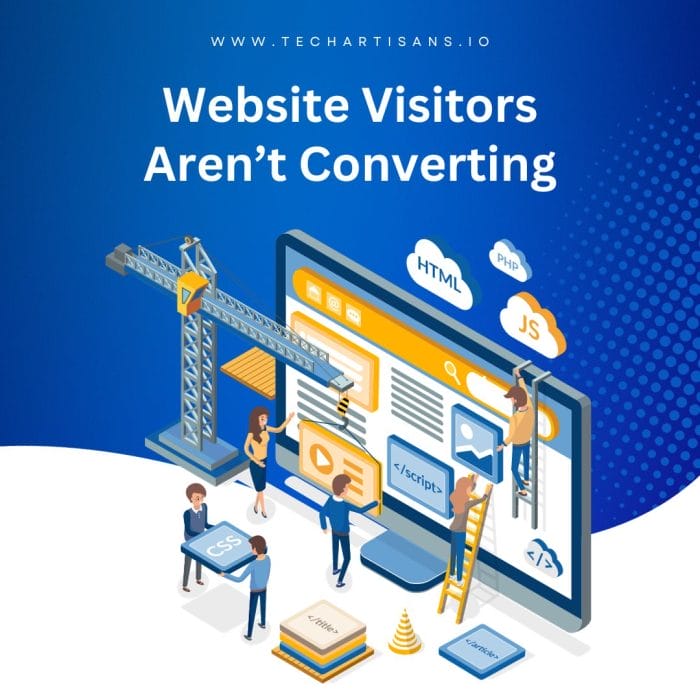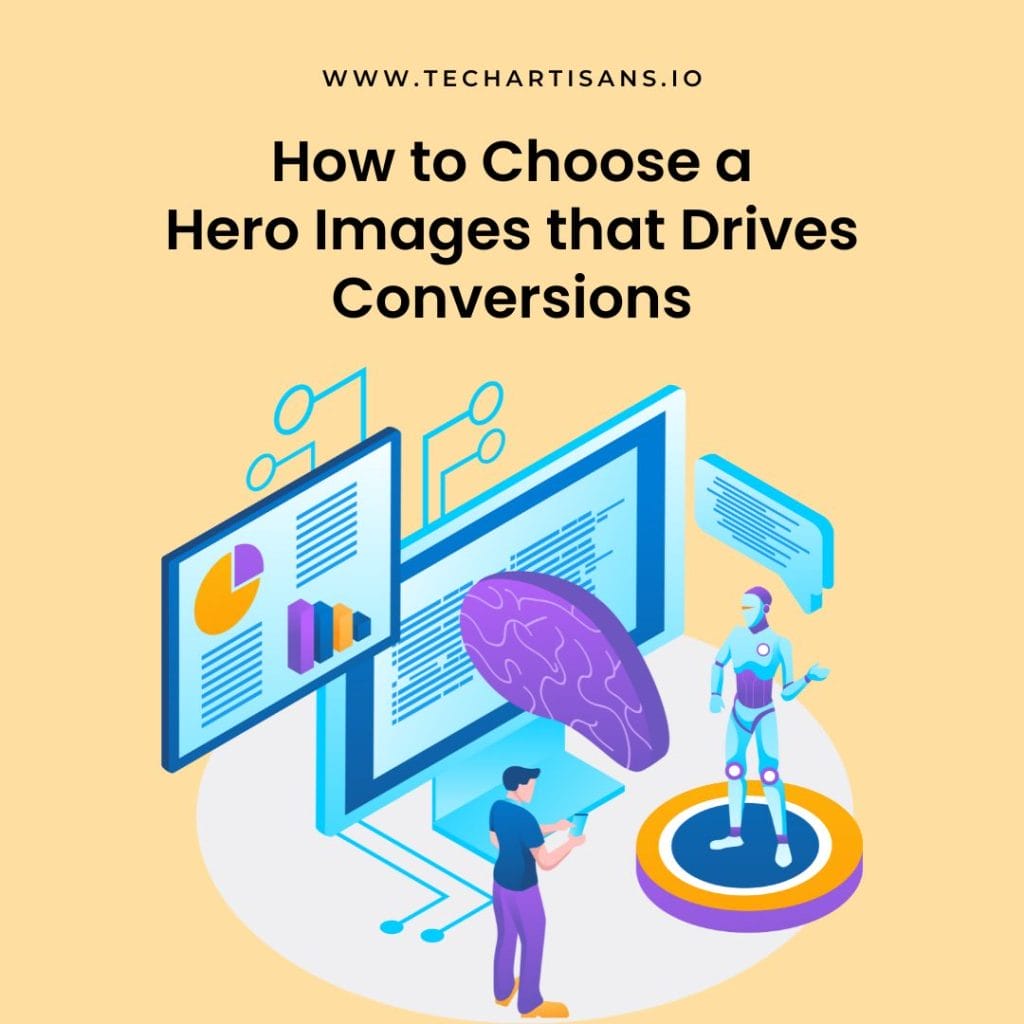Converting website visitors into customers is one of the major goals of any online business. Unfortunately, it’s not easy to achieve that goal, and many businesses struggle and fail due to low conversion rates.
There could be several reasons your website visitors are not converting, and it’s important to understand them to take steps to improve your conversion rate. In this article, I have compiled a list of 15 major reasons your website visitors aren’t turning into leads. By addressing these issues, you can turn more visitors into paying customers.
15 Reasons Why Your Website Visitors Aren’t Converting
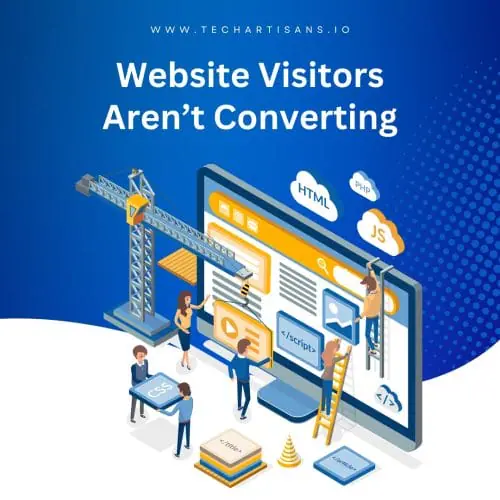
No Clear Call-To-Action Button

A lack of clear call-to-action (CTA) is a common reason why your website traffic may not convert. It is one of the most important features of ecommerce sites. A CTA is a button, link, or another element that tells your site, visitors, what you want them to do when they want to get your product or avail of your services. Some examples of CTA on the websites are: “Sign up now!”, “Buy now!”, or “Learn more!”.
If your website doesn’t have a clear CTA, your potential customers may not know how to take the next step. They may get confused and leave your site without taking any action. Therefore, a clear Call-to-Action is necessary to improve website conversions.
How can you create effective CTAs?
- Make it prominent: Your CTA should be easy to spot and stand out from the rest of your website. You can use a contrasting color or a larger font size to make it prominent.
- Use action-oriented language: Use verbs like “Sign up”, “Buy”, or “Learn” to tell visitors what you want them to do.
- Make it specific: Instead of using a generic CTA like “Click here”, use something more specific like “Sign up for our newsletter” or “Buy now and save 10%”.
- Test different CTAs: Try different CTAs to see which ones work best for your website. You can use A/B testing to compare the performance of different CTAs.
Confusing Navigation:

If users can’t find what they’re looking for on your website, they become frustrated and leave. To avoid this, have a clear, logical navigation structure, which is a key aspect of future-proofing your website.
How to improve your website’s navigation?
- Keep navigation simple: Only include the most important page and categories to make it as simple and easy as possible.
- Logical organization of our content: Group your content into categories and subcategories to make it easier for visitors to find what they’re looking for.
- Use clear and descriptive labels: Descriptive and clear labels for your navigation menu items help visitors know what to expect when they click on them.
- Use drop-down menus: Drop-down menus are helpful if you have a lot of content on your websites. This keeps your navigation menu from getting cluttered.
- Include a search bar: A search bar makes it easier for visitors who can’t find what they’re looking for in the navigation menu.
Poor Design or Layout:

Websites that are poorly designed or laid out can be confusing and off-putting to visitors. To avoid this, invest in professional design and layout to make your website visually appealing, using tools like the best web design software available.
How to improve your website’s design and layout for more website conversions?
- Use a consistent design: Design should be consistent across all web pages of your website to create a cohesive brand identity.
- Choose a color scheme for your brand: Choose a color scheme that is appropriate for your brand and that is easy on the eyes.
- Use high-quality images: High-quality images make your website look professional and visually appealing.
- Use whitespace effectively: Whitespace separates different elements on your website and makes it easier for visitors to read and navigate.
- Responsive design: Make sure your website looks good on different devices and screen sizes.
Slow Loading Times:

If your business website takes too long to load, visitors get frustrated and leave before they have a chance to see what you have to offer. To ensure this doesn’t happen to you, optimize your website’s loading times to ensure that it loads quickly, which is crucial for ecommerce SEO platforms.
How to optimize your website’s loading times?
- Optimize images: Large images slow down your website, so you should optimize them by reducing their file size without sacrificing quality.
- Use caching: Caching speeds up your website by storing a copy of your website page and assets in the visitor’s browser. This means that they don’t have to be downloaded every time they load a page.
- Minimize third-party resources: If your website relies on third-party resources like fonts, scripts, or widgets, it can slow down your website. Minimizing the use of these resources may improve the speed of your website.
- Use a content delivery network (CDN): It speeds up your website by serving your website’s assets from servers located near the visitor’s location.
Lack of Trust:
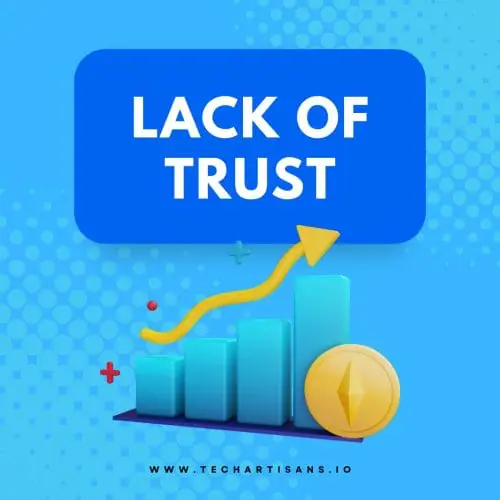
Building trust in your users is the most important thing to have them buy from you. If visitors don’t trust your website, they may be hesitant to take action. You have to display trust indicators on your website to build credibility and avoid common ecommerce mistakes.
Trust indicators are elements that show them that your website is legitimate, safe, and trustworthy.
Some examples of trust indicators:
- Security seals: like Norton or McAfee seals show visitors that your website is secure and protects their personal and shipping information.
- Customer reviews: They build trust with visitors by showing them that other people have used your product or service and had a positive experience.
- Contact information: such as phone number and email address, can build trust with visitors by showing them that you’re a real company that they can contact if they have any questions or issues.
- Professional design: A professional design shows that you take your business seriously and are committed to providing a high-quality product or service.
Unclear Value Proposition:

It is a statement that communicates the benefits and value of your product or service, much like how we explain the benefits of having a website to your target audience. If your proposition is unclear or doesn’t effectively communicate the value of your product or service, visitors may not be motivated to take action.
How to create a clear and unique value proposition?
- Identify the benefits: Tell how they solve your target audience’s problems or meet their needs.
- Clear and concise: Use a clear and concise proposition, without jargon or technical language.
- Make it relevant: It should be relevant to your target audience and address their unique needs and challenges.
- Use persuasive language: Convince visitors that your product or service is the best solution for them.
- Test it: Test different versions of your value proposition to see which one works best at driving conversions.
No Sense of Urgency:
If there’s no compelling reason why your visitors should take action, they may decide to put it off until later. To create a sense of urgency and encourage visitors to take action, consider strategies used in lifecycle marketing can use language and design elements that convey the message that time is running out or that there’s a limited opportunity available.
How can you create a sense of urgency on your websites?
- Limited-time offers: Offer special discounts or promotions that are available only for a limited time.
- Countdown timers: Countdown timers show your potential customers how much time they have left to take advantage of an offer.
- Scarcity: Use language that conveys scarcity, such as “limited quantities available” or “last chance to buy.”.
- FOMO (fear of missing out): Use language and design elements that tap into people’s fear of missing out on a good deal or opportunity.
Lack of Social Proof:

Social proof is necessary because people are more likely to take action if they see others doing the same thing. If visitors don’t see any evidence that others are using and benefiting from your service, they may not connect, underscoring the need to connect with customers through your website from your product or service, they may be less likely to convert.
How to use social proof to increase conversions?
- Display customer testimonials: Customer testimonials are a powerful form of social proof. Display them on your website to show visitors how others have had positive experiences with your product or service.
- Show off your social media following: If you have a large following on social media, display your social media icons and follower counts on your website to show visitors that you have a large, engaged community.
- Case studies or success stories: Case studies and success stories demonstrate the value of your product or service to visitors by showing them real-world examples of how it has helped others.
- Social media reviews: Consider displaying positive reviews on your website to show your potential customers that others are happy with your product or service.
Complex or Lengthy Forms:

If your forms are too long or complicated, it frustrates the visitors and they abandon them before completing the process. To avoid this from happening, Keep your forms as short and simple as possible, similar to how you might build an effective client intake form and only ask for necessary information.
How to create effective forms?
- Keep it short: Only ask for the absolutely necessary information. The shorter your form, the more likely visitors are to complete it.
- Placeholder text: Use placeholder text to give visitors an idea of what information is being requested in each field.
- Clear, concise labels: Use clear, concise labels for your form fields so that visitors know what information is being requested.
- Make it visually appealing: Use a clean, visually appealing design for your forms to make them more inviting to fill out.
- Test your forms: Test different versions of your forms to see which ones are most effective at driving conversions.
Lack of Mobile Optimization:
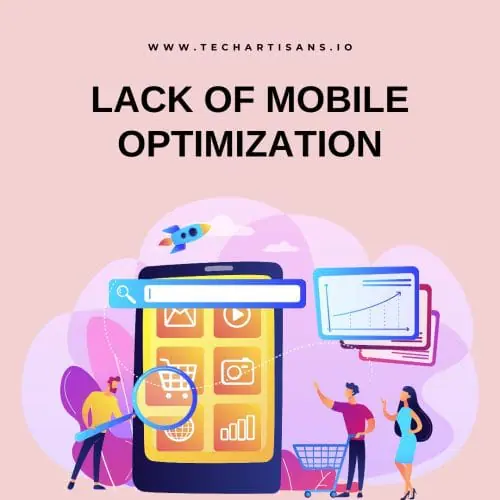
Ensure your website is optimized for mobile devices to make sure visitors may have a poor user experience on their mobile phones. This can lead them to leave your site and not take any action.
How to make your website mobile-friendly?
- Responsive design: A responsive design ensures that your website looks good and works well on different screen sizes and devices.
- Optimize images for mobile: Optimizing images ensures they load quickly and don’t take up too much space.
- Mobile-first design approach: It means designing your website for smaller screens first and then adapting it for larger screens. This ensures that the mobile version of your website is the best it can be.
- Use large buttons: Use large buttons that are easy to tap on mobile phones so the visitors can take action easily.
Poor Copywriting:
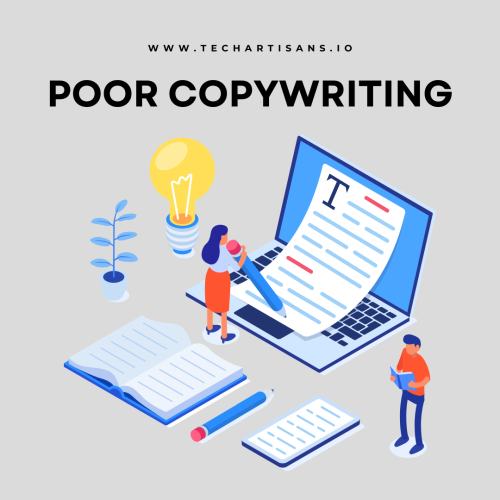
Copywriting is the art of writing persuasive, compelling content that motivates visitors to take action. It is an important part of digital marketing that every digital marketing agency uses.
A poorly written copy is confusing to visitors, which can cause them to leave your site without taking any action.
How to improve your website’s copy?
- Clear, concise writing style: Avoid using jargon or technical language that can be confusing to visitors.
- Active voice: Active voice sentences make it more engaging and persuasive.
- Shorter paragraphs and bullet points: Short paragraphs and bullet points make your copy easy to read and scan.
- Subheadings: Use subheadings to break up your copy and make it easier to understand.
- Compelling headlines: Make compelling headlines to grab visitors’ attention and motivate them to read more.
Distracting or Intrusive Pop-Ups:
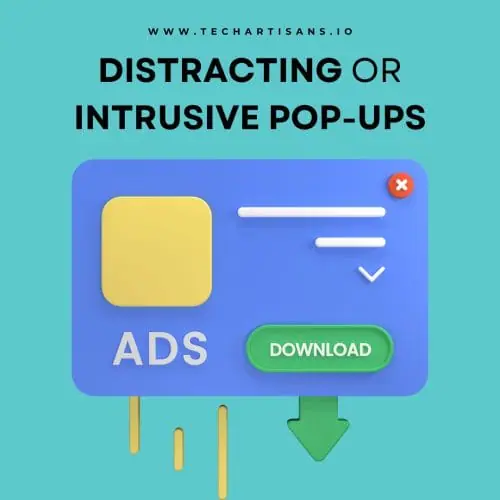
If your website uses pop-ups that are distracting and overly intrusive, they annoy the visitors which makes them leave your site without taking any action. To avoid this, use pop-ups sparingly and make sure they’re not distracting.
How can you use pop-ups effectively?
- Use them sparingly: Avoid using pop-ups on every page or too frequently, as this can be annoying to visitors.
- Make them relevant: Make sure the pop-ups you use provide relevant information to the content of your website and the interests of your visitors.
- Use a timed delay: Make sure the pop-up doesn’t appear immediately when the visitor lands on your website. This gives them a chance to look around before being interrupted.
- They should be easy to close: Make sure your pop-ups are easy to close, so the visitors don’t feel trapped or frustrated.
Too Many Options:
Having too many options can be a barrier to conversion for website visitors. If visitors are presented with too many options, they may become overwhelmed and unsure of which one to choose. To avoid this, limit the number of options you present to visitors and make it easy for them to make a decision.
How to present options to visitors more effectively?
- Limit the number of options: Instead of presenting visitors with a long list of options, limit the number of options to a few that are most relevant and appealing.
- Clear, concise labels: Use clear, concise labels for your options to make it easy for visitors to understand what they’re choosing.
- Descriptive language: Use descriptive language to help visitors understand the benefits of each option and why they should choose it.
- Images and videos: Use images and videos to help visitors visualize and understand the options you’re presenting.
- Filters and sorting: Use filters and sorting options to help visitors narrow down the options and find what they’re looking for more easily.
No Clear Path to Conversion:
The lack of a clear path to conversion, makes visitors confused about how to take the next step which results in low conversions. To prevent this, have a clear, logical flow that guides visitors toward the desired action, whether it’s making a purchase, signing up for a newsletter, or filling out a form.
How to build an easy path to conversion?
- Clear call-to-action (CTA): Make sure you have a clear CTA on every page of your website, telling visitors what you want them to do next.
- Labels: Descriptive labels for your CTA buttons and links make it clear what action visitors will be taking when they click.
- Progress indicators: Progress indicators such as a progress bar or numbered steps on checkout pages show visitors how far they are from completing the desired action.
- A logical flow: A logical flow that guides visitors through your website, taking them step by step toward the desired action.
- Test your conversion path: Test different versions of your conversion path to see which ones work best at driving conversions.
By following these tips, you can create a clear, logical path to conversion that guides visitors toward the desired action and for more conversions.
Poor Targeting:

If you are not targeting the right audience, visitors may not be interested in your product or service. To prevent this, Make sure your website is targeting the right audience, ensuring you are catching the right leads and providing relevant content and offers.
How can you improve your targeting?
- Define your target audience: Define your target audience clearly by identifying their demographics, interests, and needs.
- Targeted language: Use language that is relevant and appealing to your target audience in your website copy and digital marketing materials.
- Targeted digital marketing strategy: Use targeted digital marketing techniques, such as retargeting and segmentation, to reach your target audience with the right messages and offers.
- Targeted landing pages: Use targeted landing pages to provide relevant content and offers to specific segments of your audience.
- Search Engine Optimization: Targeting also is done by a proper and effective seo campaign to reach the relevant audience through search engines.
- Analytics and tracking: Use analytics and tracking tools to understand how your target audience is interacting with your website and make adjustments accordingly.
By following these tips, you can improve your targeting and make your website more relevant and appealing to your target audience, which can help increase your conversions.
Conclusion
There are numerous potential reasons why your website visitors may not convert, and it’s important to identify and address these issues to increase your conversion rate. Some common reasons are listed above along with tips to resolve these issues. By addressing these issues and optimizing your website for conversions, you can improve your website’s performance and increase the number of visitors who take action on your site.

